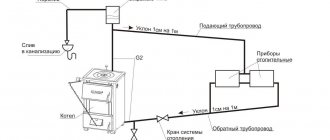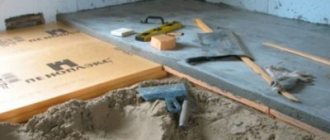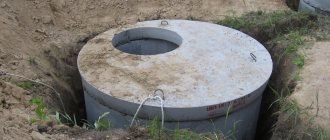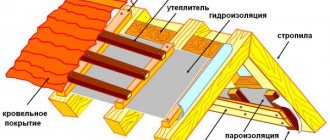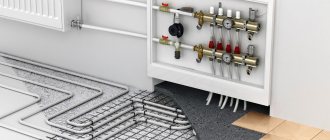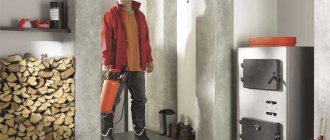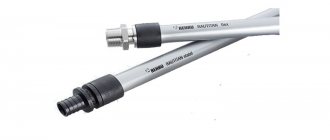When installing a heating system, sooner or later you get to installing a boiler room. Very often in Russia and the CIS countries, wall-mounted gas boilers are installed in private homes and beyond. This is primarily due to good gasification and ease of use of such boilers in comparison with solid fuel ones.
Ideally, when installing a wall-mounted gas boiler, you need to involve a certified specialist. But what to do if a problem arises with such personnel? Let's look into this issue in detail.
Types of gas boilers
Many companies involved in the production of gas equipment offer users various types of heating boilers, the designs of which are designed exclusively for working with blue fuel. They can be used for absolutely any scale and area.
Speaking about installation types, boilers are divided into:
Floor-standing
They are characterized by such indicators as high power, durability and reliability. Their purpose is installation in buildings with an area above the average size and area. However, flagship models also have their drawbacks: the need for a separately installed and equipped room.
Wall mounted
This type of boiler is a great option for small private homes. Consequently, there is no need to build a separate room for them, and they are multifunctional models. They contain a built-in expansion tank, a circulation pump, a safety group, and sophisticated automation. Assembly and installation do not require special elevated conditions.
This type of boiler is installed everywhere and is widely used in modern apartments, dachas, houses and cottages, which is due to the provision of maximum comfortable environmental conditions and minimal effort and expense for assembly and installation. Currently, they are created using design solutions and compact resolutions. We also wrote detailed material on the topic of comparing these types of boilers.
There is also a division according to the type of combustion chambers of boilers.
Open combustion chamber
This model is prone to natural traction. One way or another, air is produced and penetrates from the interior of the room, and the combustion products themselves are discharged exclusively through the chimney. If there is insufficient ventilation, there will be a lack of oxygen. The performance of heating units with an open combustion chamber depends on the draft. It is important to install chimneys correctly and not skimp on their insulation. In this case, there is a high probability of risk of combustion products entering the interior of the room. Based on this, the price categories are much lower than average.
Closed chamber
They are characterized by forced traction. Electric fans (smoke exhausters) are installed in them, with the help of which it becomes possible to remove substances formed during the combustion process through the chimney. Air enters the chamber by sucking it through the outer, external pipe, and exiting through the internal one.
Solution
If you have individual gas heating, it is most difficult to beat older models of equipment. Designs released 15 or more years ago do not correspond well to modern design standards. It would be best to replace the heating devices with new ones. But such a procedure is very expensive, and professionals will have to work on it. One of the best options is therefore to camouflage gas equipment.
In the case of wall mounting of the device, it is either hidden by the facade of the cabinet, or made into an important interior detail. Since you can't hide the device, you can introduce it into the environment. Masking is bad because behind the facades it is impossible to provide a free flow of fresh air to the device. In the version with floor-standing boilers, sometimes they use canisters or boxes made of gypsum plasterboard. The design of these elements is determined solely by the stylistic direction of the kitchen.
In old premises, boilers are usually rigidly tied to some corner. And any attempt to move them results in serious problems. Government bodies require that many papers be completed regulating this procedure. And the work itself will be difficult. Therefore, the idea of moving gas equipment to a less noticeable place will most often have to be abandoned.
Things are much simpler if you are just planning to install the boiler. Then you can choose the optimal solution. Of course, taking into account all the same fire safety requirements. When placing the boiler inside the furniture, the inside of the furniture is covered with foil or other materials. It is best to immediately specify when ordering a headset that the product is needed to mask heating devices.
Proven cabinet designs are available in the assortment of any self-respecting furniture factory. They perfectly match other products in the individual collections. But if you don’t want to put the boiler in the closet, you can resort to decorating it with curtains.
This solution is optimal for old-fashioned rustic styles. In such an environment, additional textile accessories in the kitchen would be appropriate.
They act differently when an open boiler layout is selected. In this case, the decoupage technique is often used for decoration. This technique involves gluing surfaces with various stickers and coating them with varnish. An original step is to imitate fireplaces. Skillfully used decoupage can turn even the most ugly object into a kitchen decoration.
We recommend: Reverse osmosis water filter: which is better, user ratings and reviews, advantages of having a mineralizer
When planning the arrangement of a small kitchen with a gas boiler, you can think about painting the heating equipment. By choosing the right design, you can easily decorate the room. But you can consider another option - decorating the boilers with carved or forged grates. These products fit perfectly into a variety of styles, the choice of which is determined only by the decor. But grilles are not just decorations; they will also reliably protect children and pets from contact with open flames.
In some cases, boilers are not decorated or disguised at all. This solution fits very well into the industrial style. We are talking about loft and high-tech styles. In the second case, it is even advisable to provide for the presence of multiple communication nodes.
Today you can easily choose boilers that look distinctly old-fashioned - they will fit into the retro style.
When thinking about the design of a kitchen-living room with a gas boiler, you need to immediately choose the same general style. In a classic room, it is completely unacceptable to display household appliances for everyone to see. The main method of camouflage is the location of the device behind the facade of the kitchen unit. This solution combines external attractiveness and free circulation of air masses in the box. In addition, lattice facades express the spirit of classics and do not interfere with the style of the room.
But it is important to remember about the ergonomics of space. This is optimally ensured when the boiler is placed in a corner. Since kitchens can be decorated in the spirit of retro, country and Provence, you need to know how to decorate gas heating in such cases. A very common technique (especially for Provence and other types of country) is to disguise the device with a textile curtain.
Camouflage textiles should be selected in the same colors as the napkins or curtains in the room. This solution allows for perfect harmony. In most cases, curtains with a floral print are used. A cage of various sizes, however, will also work.
If the owners of the house are worried about maximum safety, they can put the boiler in the cabinet in a country-style kitchen.
Difference between closed and open chambers
The answer is quite simple and clear: in their design features, the method of oxygen absorption.
It is worth understanding that in a residential building you need to resort to an option such as a closed one, since only this will be acceptable for use in private buildings. Open spaces require a separate room.
Studying the process diagram, it can be noted that the air, which ensures normal and stable operation, is absorbed through a coaxial chimney from the external space. In the future, the already processed substances also move from the premises to the street. So there is no need for extra costs and expenses for additional ventilation devices.
It is worth resorting to purchasing an open version only for their installation in boiler rooms. Its operating principle is the absorption of oxygen from the oxygen contained in the room. Therefore, it is important that regular and stable ventilation of the building is ensured.
The main rule is to install a gas boiler completely separately from the house, which ensures safety, since the likelihood of leakage of gas and substances formed during combustion is reduced to a minimum, which is due to the non-use of air from the house. To completely eliminate the possibility of emergency situations, it is worthwhile to first undergo a thorough inspection of the pipeline for the presence of various types of distortions, scratches and damage.
Look at an example of converting a boiler room from an open boiler to a closed one:
The advantage of installing a boiler with a closed chamber
- When getting rid of the products consumed in the isothermal process, a reverse reaction occurs - cooling, which dramatically increases the safety and reliability of such boilers.
- The room equipped for this device does not overheat and is protected from various and numerous air pollutants, since combustion occurs only on the street, that is, not within the house.
- High efficiency
- Air enters the room, the pressure increases, as a result of which its temperature increases. Thus, the closed chamber is environmentally friendly and clean.
There are also disadvantages:
An installed gas boiler with a closed chamber will not be able to operate without electricity. But as soon as electricity appears, all work starts automatically.
Requirements for a boiler room with a gas boiler
Much depends on the performance of the boiler: if it reaches more than 30 kilowatts, then there is a need for a separate room. It is on the basis of the provisions of the 'Building Codes and Rules' that specific instructions are built and created for the arrangement of a boiler house specialized in heating for the combustion of products.
- It is possible to place a boiler room in attics, basements, that is, in special rooms of houses. But it is worth considering that a cleared corridor and sufficient illumination are required.
- The installed volume is at least 14 square meters, taking into account a power of 30-60 kilowatts and above 15 square meters intended for boilers of higher productivity.
- Comfortable and unhindered access to the device.
- Covering the walls with non-flammable material.
- Providing a ventilation process with three times the amount of air exchange.
Three options for installing a gas boiler
When installing a wall-mounted gas boiler in a private home, you have three options:
1. You contact the company yourself and order the service of installing a gas boiler at home. The company’s employees not only install the boiler, but also provide post-warranty service, and also place the boiler for servicing. 2. If you do not have the opportunity to order boiler service and installation directly from the company, you will order a specialist to install the boiler. Then the company that sold you the boiler itself sends a service department. It carries out commissioning work and also supplies equipment for service. 3. If you live in a rural area and there are no service centers nearby, then you can do the installation yourself, following the instructions. Moreover, instructions for installing a wall-mounted gas boiler in a private house should be exclusively from the manufacturer. You also need to consider your heating system when installing.
Floor-standing
In order to save money, the owners themselves are trying to figure out how to install a floor-standing gas heating boiler in a one-story wooden house. Basic requirements include the following points:
- Strengthening the place where the boiler will be located. It is best to make a screed or carefully lay concrete slabs.
- A gap of at least 15 cm is left between the boiler and the wall surface.
- If the base of the house is not fireproof, then additional cladding with metal sheets is necessary. It is best to insulate the walls with roofing steel, which is laid on an asbestos sheet at least 30 mm wide.
- Using a building level, the condition of the floor is assessed, since the surface under the boiler must be perfectly flat.
- Connecting the chimney is prohibited without first checking the draft.
- Filters are installed that do not trap debris at the entrance to the heat exchanger.
- At the final stage, the prepared double-circuit boiler is connected to the water pipes.
The video provides up-to-date information about installing the boiler:
Possibility of installing a gas boiler with your own hands
In short, installation of a gas boiler in a private house is possible for everyone. Follow the installation diagram and installation rules and everything will work properly. But the exception is the input, which must be carried out by gas service specialists. Also, boiler testing is carried out only by a specialized company, since they have certificates and licenses for this.
However, it would be safer to rely on the qualified employees of a professional company. After all, only they will be able to carry out the necessary work with excellent accuracy and competence and provide the necessary safety during operation of the equipment.
Connecting the boiler to the central line
It is best to start this stage by connecting the main pipe to the corresponding boiler element.
You can use tow as a reliable sealant, since none of the materials offered today can guarantee high tightness of the connection. For a classic heating boiler, it is better to choose copper pipes with a diameter of 1 to 4 cm.
Some craftsmen choose corrugated hoses. Rubberized parts are prohibited, as over time they crack, which can lead to depressurization of the system.
The corrugated parts are fixed to the pipe using a union nut, and a paronite gasket is used.
The result of professional connection of all connecting parts
Gas boiler installation steps
Chimney hole
Before installing the pipe under the chimney, it is necessary to create a hole with the exact size (usually 120 mm) and place a specific protective and sealing apron, onto which the chimney is connected.
Boiler installation
The boiler package usually includes, first of all, the boiler itself and the operating instructions, a warranty service coupon, a mounting strip, and an installation diagram.
First of all, you need to decide on the installation location of the boiler. In European countries, boilers are usually installed in the kitchen. They do not violate harmony and fit into almost every kitchen interior. The equipment operates quietly.
You can mount a wall-mounted gas boiler in a basement or basement. In this case, certain standards must be observed. The boiler must be installed by at least two people, even if it is not too heavy. A distance of at least 30 cm must be provided on all sides of the boiler. Regarding the height of the boiler: it is important that the control panel is located depending on the height of the owner.
Important! Keep the control panel out of reach of children. You should not place the boiler obviously high above the floor, because in case of repair or service work it will be inconvenient for specialists and they will have to use a stepladder or stool .
Next, we take the installation template (it is attached to the boiler), which is developed for several types of boilers. Using the template, you can mark the pipe outlets, chimney and fastenings and then install a wall-mounted gas boiler without any problems. In Europe, during the construction of a house, pipes are laid in accordance with a pre-selected gas boiler.
Chimney installation
The coaxial chimney has a diameter of about 100 mm, but the hole is made with a diameter of 120 mm or more. The play is necessary so that the chimney is directed towards the street at an angle of approximately 5 degrees. Condensation that forms during operation must be drained outside. After installing the chimney, the hole can be foamed with foam. A coaxial pipe consists of two pipes. A pipe with a diameter of 60 mm removes combustion products, and air from the atmosphere is sucked into the space between 60 and 100 mm. This is why the walls of the pipe are slightly warm.
The mounting bolts have plastic dowels. They can be used for various walls.
Connecting pipes to the boiler
There are two options for connecting hot and cold water supply pipes, as well as the heating system. The first is that the pipes are supplied during the construction or renovation phase, taking into account the boiler you choose. However, it may be necessary to install a wall-mounted gas boiler if a heating system already exists.
The supply pipeline is connected to the boiler supply, return to return. When installing a double-circuit boiler, it is necessary to connect a cold water supply circuit to the boiler. Connect the hot pipeline to the remaining connection and install it in the hot water supply riser.
Do not forget to install a dirt filter on the return, a check valve on the supply, as well as ball valves on each connection.
A dirt filter is necessary to prevent large debris from entering the boiler. A check valve is needed to protect against sudden pressure of coolant into the supply. The taps will be useful when servicing the boiler.
As you understand, there is nothing complicated in installing a wall-mounted gas boiler and you can do the installation yourself.
Gas connection
This action can only be performed by a gas service employee. He will install a pipe for you in accordance with the design, and the gas hose from the pipe to the boiler is installed independently.
It is advisable to use cardboard spacers. Rubber gaskets can tear when clamped, which is very unsafe. Today, paronite cardboard gaskets are in high demand.
Electrical installation
Produced for boilers with modern automation and for models with a closed combustion chamber, as they are equipped with electronic devices. Usually limited to supplying electricity closer to the boiler and installing a plug to the boiler wire. Don't forget about phase dependence. If suddenly the boiler does not turn on, try simply turning the plug over and plugging it in again.
Sockets and other connections must be located at a distance from the boiler so that in the event of an emergency, splashes do not get on the electrical wiring. The gas hose must have a yellow metal braid. It is necessary to prevent a breakdown of the hose in the event of lightning or overvoltage.
In order to ensure the safe operation of a gas boiler, it is better to install a network voltage stabilizer.
Starting a gas boiler
After the wall-mounted gas boiler is installed, it must be filled with coolant. If the system is new, the pressure should be approximately 1.8 bar. When you first start, set the temperature at 45-50 degrees. Modern boilers quickly accelerate the system. Try to increase the temperature gradually to avoid temperature shock. If the boiler power is 24 kilowatts, then this is enough to heat a house of 300 square meters. meters if the house is well insulated. Try not to buy boilers of lower power, because even if the area of the house is approximately 160 square meters. meters, but it is poorly insulated, then even 24 kilowatts may not be enough. It should also be taken into account that gas has different calorie content.
Chimney installation
The operation of gas heating boilers involves the construction of holes in the roof and ceiling to remove harmful gases. Only after this a special adapter is carefully placed on the outlet pipe, which in the future will be connected to the chimney.
To operate wall-mounted models, it is prohibited to use corrugation, only sheet material. After fixing this part, they proceed to the tee and a specific inspection, through which it will be possible to inspect the chimney and clean it of soot during operation of the equipment. Only compliance with all installation conditions helps to extend the life of the boiler.
Attention! The chimney pipe brought to the roof surface is raised to the optimal height, and a special tip is installed that protects the chimney from rain and snow.
Boiler room in the basement of the cottage
Installation cost
When contacting gas boiler installation specialists, many clients are interested in the cost of the work. It is important to understand that pricing policies may differ in different regions.
A comprehensive boiler connection with a hole and start-up starts from 5,000 rubles. This amount will be asked from you provided that there is no additional work. If the heating system is made of metal pipes, then the cost of installing wall-mounted gas boilers will be higher. Around 6000-8000 rubles.
Also budget 3000-4000 rubles for the purchase of materials (hose, pipes, taps, fittings, etc.)
Only competent people who have access to this type of work can install a gas boiler. Even if the boiler is installed by company specialists, you need to know its operating system. The boiler itself is as safe as possible in operation as it has many degrees of protection.
Documents for the boiler
Let's say you have equipped the furnace room in compliance with all requirements. Are we buying a boiler? It is too early. First of all, check if the previous gas papers have been lost, and bring them out into the light of day:
- Gas supply contract if the boiler is a heating boiler. Subconsumers can only install hot water boilers.
- All documents for the gas meter. Any boiler cannot be installed without a meter. If it doesn’t exist yet, there’s nothing you can do, you need to install it and arrange it, but that’s a different topic.
Now you can buy a boiler. But, having bought it, it’s too early to install:
- The BTI needs to make changes to the registration certificate of the house. For privatized apartments - through the organization operating the house. In the new plan, a closet under the boiler should be shown, and clearly marked: “Furnace room” or “Boiler room”.
- Submit an application to the gas service for the project and specifications. The required documents also include a technical passport for the boiler, so it must already be purchased.
- Install the boiler (see next section), except for the gas system. This can be done while the gas workers are preparing the project, if the premises are approved.
- Call a specialist to make a gas connection.
- Submit an application to gas workers for commissioning.
- Wait for the gas service engineer to arrive, he will check everything, draw up a conclusion on suitability and give permission to open the gas shut-off valve to the boiler.
Note: gas workers are not allowed to give permission to private individuals to work on gas equipment. Therefore, to connect gas to the boiler, you will have to call a specialist or then “resolve the issue” with an inspector during commissioning. As a rule, the former is cheaper.

